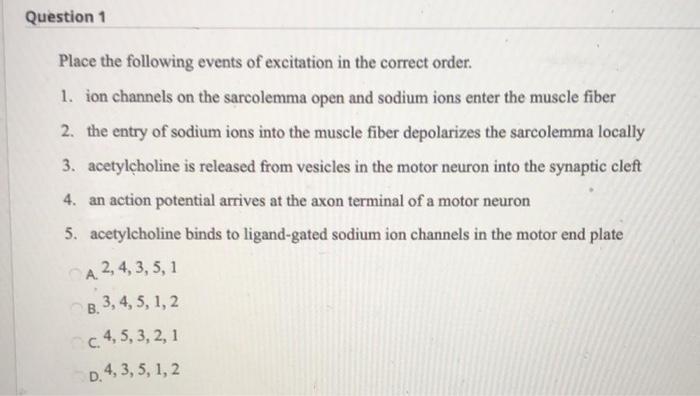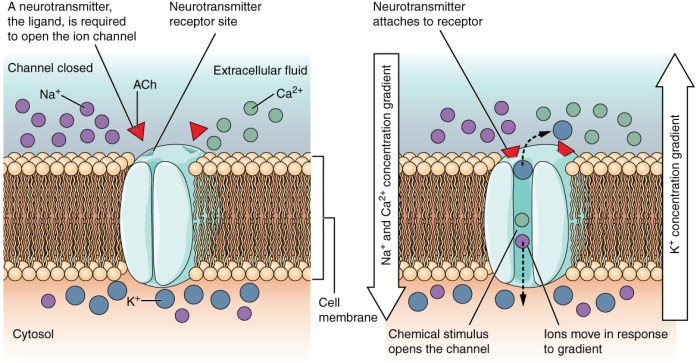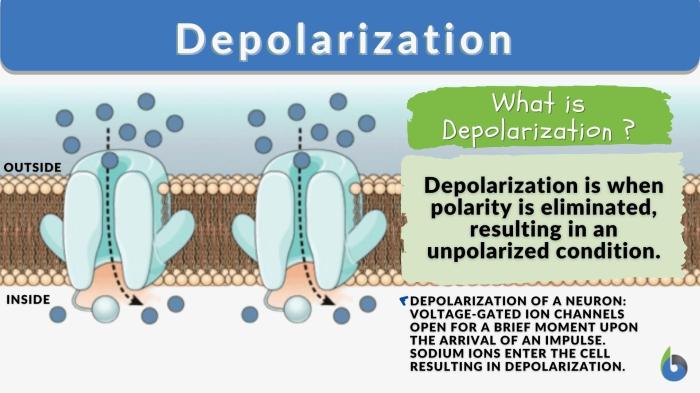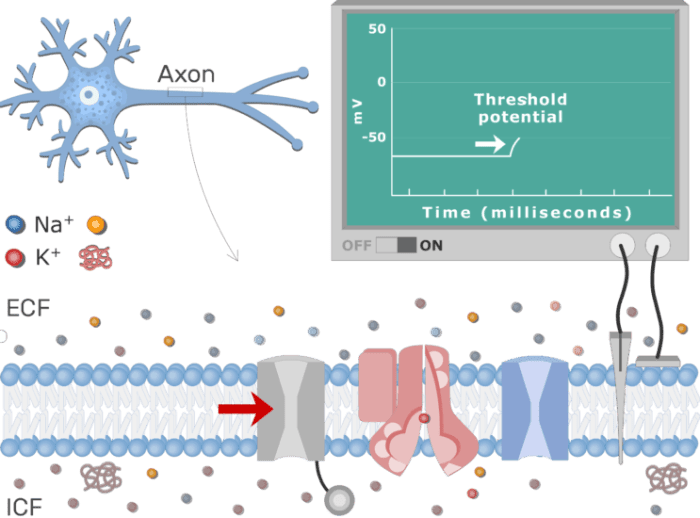Place the following events of excitation in the correct order – In the realm of physiology, the sequence of events that constitute excitation holds immense significance. Understanding the precise order of these events is paramount, as it forms the cornerstone of fundamental physiological processes such as nerve conduction and muscle contraction.
This article delves into the intricacies of excitation, exploring the sequence of events involved, the role of ion channels, and the factors that influence the rate of excitation.
As we embark on this journey, we will dissect the events of excitation into their individual components, examining their interplay and the consequences of their disruption. We will also venture into the practical applications of this knowledge, exploring its relevance in fields such as medicine and research.
Brace yourself for an illuminating exploration of the captivating world of excitation.
Events of Excitation: Place The Following Events Of Excitation In The Correct Order

Excitation is the process by which a cell membrane becomes more positive inside than outside. This occurs when sodium ions (Na+) flow into the cell and potassium ions (K+) flow out of the cell. The sequence of events that occur during excitation are as follows:
- Resting potential: The cell membrane is at rest, with a negative charge inside and a positive charge outside.
- Depolarization: A stimulus causes the sodium channels in the cell membrane to open, allowing Na+ ions to flow into the cell. This makes the inside of the cell more positive and the outside more negative.
- Action potential: When the inside of the cell becomes more positive than a certain threshold, the voltage-gated sodium channels open completely and the sodium ions rush into the cell. This causes a rapid depolarization of the cell membrane, which is called an action potential.
- Repolarization: After the action potential, the sodium channels close and the potassium channels open, allowing K+ ions to flow out of the cell. This makes the inside of the cell more negative and the outside more positive, restoring the resting potential.
- Hyperpolarization: The potassium channels remain open for a brief period after the action potential, causing the inside of the cell to become more negative than the resting potential. This is called hyperpolarization.
The refractory period is the period of time after an action potential during which a cell is unable to generate another action potential. This is because the sodium channels are inactivated and the potassium channels are open.
Factors Affecting Excitation, Place the following events of excitation in the correct order
The rate of excitation can be affected by a number of factors, including:
- Temperature: The rate of excitation increases with increasing temperature.
- Membrane potential: The more negative the membrane potential, the less likely it is that an action potential will be generated.
- Ion concentrations: The concentrations of Na+ and K+ ions in the extracellular and intracellular fluids can affect the rate of excitation.
For example, a decrease in the extracellular Na+ concentration will decrease the rate of excitation, while an increase in the intracellular K+ concentration will increase the rate of excitation.
Applications of Excitation
Understanding excitation is important in a number of fields, including medicine and research. In medicine, excitation is used to study the electrical activity of the heart and brain. In research, excitation is used to study the function of ion channels and the mechanisms of nerve conduction and muscle contraction.
Commonly Asked Questions
What is the refractory period?
The refractory period refers to the time interval following an action potential during which a neuron is less excitable or completely unexcitable. It ensures the unidirectional propagation of nerve impulses.
How does temperature affect excitation?
Temperature influences the rate of excitation. Higher temperatures generally accelerate the rate of excitation, while lower temperatures slow it down. This is because temperature affects the kinetic energy of ions, which in turn affects their movement across the membrane.
What role do ion concentrations play in excitation?
Ion concentrations play a crucial role in excitation. The difference in ion concentrations across the membrane, particularly sodium and potassium ions, creates an electrochemical gradient that drives the movement of ions during excitation.


